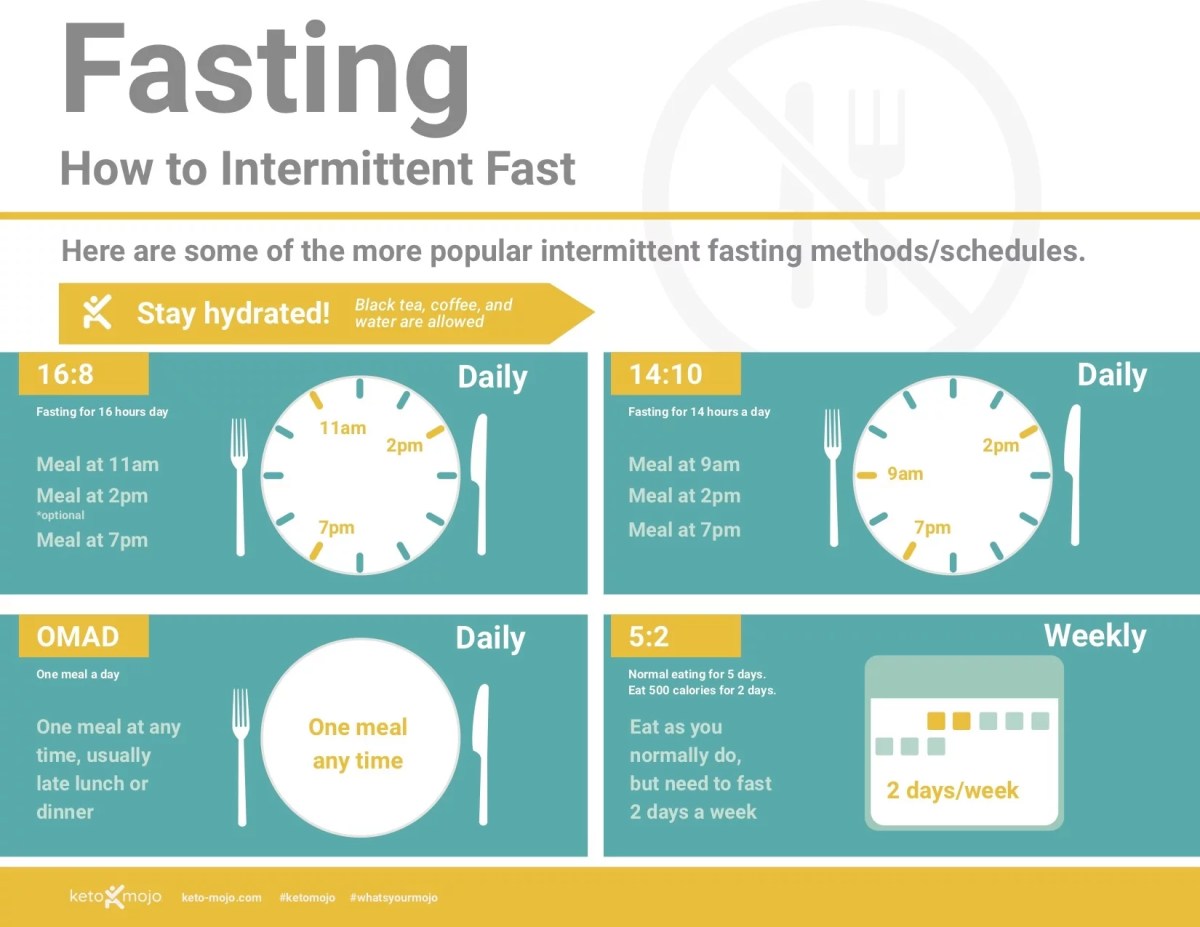Embark on a culinary journey into the world of ketogenic eating combined with the power of intermittent fasting! This comprehensive guide unveils a treasure trove of delicious and effective recipes designed to fuel your body while optimizing your weight management goals. We’ll explore high-fat, low-carb breakfast, lunch, and dinner options, along with satisfying keto snacks and refreshing beverages, all perfectly tailored to fit various intermittent fasting schedules like 16/8 and 5:2. Prepare to discover the secrets to effortless weight loss and sustained energy through perfectly balanced meals and strategic eating windows.
From simple, quick recipes ideal for busy weekdays to more elaborate dishes perfect for weekend indulgence, this guide caters to every level of culinary expertise. We’ll break down macronutrient profiles, provide step-by-step instructions, and offer insightful tips and tricks to ensure your keto intermittent fasting journey is not only successful but also enjoyable. Prepare to transform your relationship with food and unlock your body’s full potential.
Keto Snacks and Drinks for Intermittent Fasting
Successfully navigating intermittent fasting often hinges on strategic snack and beverage choices during your eating window. These should be keto-friendly, satisfying, and designed to minimize hunger pangs and prevent cravings that could derail your fasting progress. The following recipes provide delicious and nutritious options to support your intermittent fasting journey while adhering to a ketogenic diet.
Keto Snack and Beverage Recipes
The following table Artikels five keto-friendly snack recipes and three keto beverage recipes, detailing their nutritional profiles and simple preparation methods. Calorie counts are estimates and may vary slightly based on specific ingredients and portion sizes. Macronutrient ratios are approximate and provide a general guideline.
| Recipe | Nutritional Information (per serving) | Preparation Method |
|---|---|---|
| Avocado and Cheese Bites (2 slices avocado, 1 oz cheddar cheese) |
Calories: ~150 Fat: ~14g Protein: ~7g Net Carbs: ~2g |
Simply mash avocado slices slightly, top with shredded cheddar cheese, and enjoy. |
| Celery Sticks with Almond Butter (4 celery sticks, 2 tbsp almond butter) |
Calories: ~200 Fat: ~18g Protein: ~6g Net Carbs: ~5g |
Fill celery sticks with almond butter. For extra flavor, sprinkle with a pinch of sea salt. |
| Hard-Boiled Eggs with Everything Bagel Seasoning (2 large hard-boiled eggs) |
Calories: ~160 Fat: ~12g Protein: ~13g Net Carbs: ~1g |
Hard-boil eggs until yolks are firm. Sprinkle generously with everything bagel seasoning. |
| Macadamia Nuts (1/4 cup macadamia nuts) |
Calories: ~200 Fat: ~21g Protein: ~2g Net Carbs: ~4g |
Enjoy a handful of macadamia nuts as a satisfying and healthy snack. |
| Keto “Chocolate” Mousse (1/4 cup unsweetened cocoa powder, 1/4 cup heavy cream, 2 tbsp erythritol, 1 tsp vanilla extract) |
Calories: ~250 Fat: ~24g Protein: ~2g Net Carbs: ~3g |
Whip heavy cream until stiff peaks form. Gently fold in cocoa powder, erythritol, and vanilla extract. Chill before serving. |
| Bulletproof Coffee (1 cup coffee, 1 tbsp unsalted butter, 1 tbsp MCT oil) |
Calories: ~300 Fat: ~30g Protein: ~1g Net Carbs: ~1g |
Blend coffee, butter, and MCT oil until smooth and creamy. |
| Unsweetened Iced Tea with Lemon (1 cup unsweetened iced tea, 1/2 lemon) |
Calories: ~5 Fat: ~0g Protein: ~0g Net Carbs: ~1g |
Brew a strong cup of tea, allow to cool, and add lemon juice to taste. |
| Sparkling Water with Lime and Stevia (1 cup sparkling water, 1/2 lime, stevia to taste) |
Calories: ~5 Fat: ~0g Protein: ~0g Net Carbs: ~1g |
Add lime juice and stevia to sparkling water for a refreshing and zero-calorie beverage. |
The Role of Keto Snacks and Drinks in Managing Hunger and Preventing Cravings
These keto-friendly snacks and beverages play a crucial role in managing hunger and preventing cravings during intermittent fasting. The high fat content in many of these options provides sustained energy and satiety, reducing the likelihood of intense hunger pangs. Furthermore, the inclusion of protein in some snacks contributes to feelings of fullness and helps stabilize blood sugar levels, preventing energy crashes and subsequent cravings for sugary or high-carbohydrate foods. The refreshing nature of the beverages helps to combat dehydration and can also alleviate some hunger sensations. Careful selection of snacks and drinks that align with ketogenic principles is essential for maximizing the benefits of intermittent fasting.
Sample Keto Meal Plans for Intermittent Fasting
These sample meal plans demonstrate how to integrate a ketogenic diet with two popular intermittent fasting methods: the 16/8 method (16 hours of fasting, 8 hours of eating) and the 5:2 method (5 days of normal eating, 2 days of restricted calorie intake). Remember to consult your doctor before starting any new diet or fasting regimen. These plans are examples and individual needs may vary. Calorie needs depend on factors like age, activity level, and body composition.
Seven-Day Keto Meal Plan for 16/8 Intermittent Fasting
This plan Artikels a sample seven-day ketogenic meal plan designed to fit within an 8-hour eating window, with the remaining 16 hours dedicated to fasting. The focus is on high-fat, moderate-protein, and very-low-carbohydrate foods. Specific recipes can be substituted with similar keto-friendly options.
Day 1:
Eating Window (e.g., 12 pm – 8 pm): Lunch: Avocado and shrimp salad with a creamy lemon vinaigrette. Dinner: Grilled salmon with asparagus and a side of cauliflower mash. Snack: Keto cheese crisps.
Day 2:
Eating Window (e.g., 12 pm – 8 pm): Lunch: Leftover salmon and asparagus. Dinner: Chicken thighs with roasted Brussels sprouts and a side of buttered spinach. Snack: Macadamia nuts.
Day 3:
Eating Window (e.g., 12 pm – 8 pm): Lunch: Ground beef and cauliflower rice stir-fry. Dinner: Steak with a side salad dressed in olive oil and vinegar. Snack: Celery sticks with cream cheese.
Day 4:
Eating Window (e.g., 12 pm – 8 pm): Lunch: Leftover steak and salad. Dinner: Pork chops with green beans and a side of keto-friendly pesto. Snack: Hard-boiled eggs.
Day 5:
Eating Window (e.g., 12 pm – 8 pm): Lunch: Tuna salad (made with mayonnaise) in lettuce cups. Dinner: Chicken breast with roasted broccoli and a side of almond flour bread. Snack: String cheese.
Day 6:
Eating Window (e.g., 12 pm – 8 pm): Lunch: Leftover chicken and broccoli. Dinner: Shrimp scampi with zucchini noodles. Snack: Brazil nuts.
Day 7:
Eating Window (e.g., 12 pm – 8 pm): Lunch: Omelette with cheese and spinach. Dinner: Burger patties (made with ground beef) with avocado and cheese, served on lettuce wraps. Snack: Chia seed pudding (made with coconut milk and sweetener).
Seven-Day Keto Meal Plan for 5:2 Intermittent Fasting
This plan illustrates a seven-day ketogenic meal plan incorporating the 5:2 method. Five days consist of regular keto meals, while two non-consecutive days feature significantly reduced calorie intake, while still adhering to ketogenic macronutrient ratios.
Five Regular Keto Days: These days follow a similar pattern to the 16/8 plan, focusing on high-fat, moderate-protein, low-carb meals distributed throughout the day. Examples include variations of the meals listed in the 16/8 plan, ensuring sufficient calorie intake to support daily activities.
Two Restricted Keto Days: On these two days, total calorie intake is reduced to approximately 500-600 calories for women and 600-700 calories for men, while maintaining the ketogenic macronutrient ratio. Examples include a single keto-friendly meal such as a large salad with plenty of healthy fats (avocado, olive oil, nuts, seeds) and a small portion of protein (e.g., grilled chicken breast or fish). Another option might be a keto-friendly soup with added healthy fats.
Note: The specific calorie reduction on restricted days should be tailored to individual needs and monitored closely.
Comparison of 16/8 and 5:2 Keto Meal Plans
Both plans utilize a ketogenic diet, but differ significantly in their fasting approach. The 16/8 method involves daily caloric restriction within a defined eating window, while the 5:2 method focuses on two days of significant calorie restriction per week.
Calorie Intake: The 16/8 plan typically results in a more consistent daily calorie intake, while the 5:2 plan involves significant fluctuations. The total weekly calorie intake may be similar depending on individual needs and choices, but the distribution differs considerably.
Macronutrient Distribution: Both plans maintain a high-fat, moderate-protein, very-low-carbohydrate ratio. However, the absolute amounts of each macronutrient will vary depending on the total daily or weekly calorie intake.
Potential Benefits: Both methods may offer potential benefits such as weight loss, improved blood sugar control, and increased energy levels. However, the 5:2 method may lead to more pronounced short-term weight loss due to the significant calorie deficit on restricted days. The 16/8 method may be easier to maintain long-term due to its less restrictive daily approach. Individual responses to these methods will vary.
Step-by-Step Guide to Creating Your Own Keto Recipes for Intermittent Fasting

Embarking on a ketogenic diet while incorporating intermittent fasting requires careful planning and a deep understanding of macronutrient balance. This guide provides a structured approach to crafting your own delicious and effective keto recipes, perfectly suited for your intermittent fasting schedule. By mastering the principles of keto cooking and adapting existing recipes, you can create a personalized eating plan that supports your weight loss goals and enhances your overall well-being.
Understanding the fundamental principles of ketogenic cooking is paramount to success. Ketogenic diets prioritize healthy fats, moderate protein intake, and drastically reduce carbohydrate consumption. The goal is to shift your body’s primary fuel source from glucose (derived from carbohydrates) to ketones (produced from fat metabolism). This metabolic state, known as ketosis, is crucial for weight loss and various health benefits.
Macronutrient Ratios and Ingredient Selection
Achieving ketosis requires careful attention to macronutrient ratios. A typical ketogenic diet consists of approximately 70-80% fat, 20-25% protein, and 5-10% carbohydrates. Ingredient selection plays a vital role in maintaining these ratios. Focus on incorporating healthy fats like avocados, olive oil, nuts, seeds, and fatty fish. Choose lean protein sources such as chicken breast, fish, eggs, and grass-fed beef. Strictly limit carbohydrate-rich foods such as bread, pasta, rice, and sugary drinks. Thoroughly read nutrition labels to ensure your chosen ingredients align with your macronutrient targets. For example, a recipe calling for 1 cup of cooked brown rice (high carb) might be replaced with 1 cup of cauliflower rice (low carb) to maintain the ketogenic balance.
Adapting Existing Recipes to Keto and Intermittent Fasting
Many traditional recipes can be adapted to fit keto and intermittent fasting guidelines with a few strategic substitutions. Consider a classic chicken stir-fry. Instead of using rice noodles or sugary sauces, substitute zucchini noodles (zoodles) and create a flavorful sauce using coconut aminos, olive oil, and spices. Similarly, a creamy pasta dish can be transformed into a keto-friendly version by swapping pasta for shirataki noodles or spaghetti squash and using a heavy cream-based sauce with cheese. Remember to calculate the net carbs (total carbs minus fiber) to ensure the recipe remains within your daily carbohydrate limit.
Tips and Tricks for Delicious Keto Meals
Creating delicious and satisfying keto meals requires creativity and a focus on flavor and texture. Experiment with various herbs, spices, and flavorful fats to enhance the taste of your dishes. Don’t be afraid to explore different cooking methods such as roasting, grilling, sautéing, and baking. Adding healthy fats like avocado oil or coconut oil not only provides healthy fats but also enhances the flavor and texture of your meals. Consider using spices like garlic powder, onion powder, cumin, paprika, and chili powder to create depth of flavor. For example, adding a sprinkle of nutritional yeast to cauliflower mash can create a cheesy flavor, mimicking a traditional mashed potato side. Using a food processor or blender to create creamy sauces and soups is another way to add richness and texture to your keto meals.
Mastering the art of ketogenic cooking within the framework of intermittent fasting opens doors to a healthier, more energized you. By strategically combining delicious, high-fat, low-carb meals with planned fasting periods, you’ll not only achieve your weight loss objectives but also experience enhanced mental clarity, improved metabolic function, and a newfound sense of control over your eating habits. This guide serves as your culinary compass, guiding you towards a sustainable and rewarding lifestyle transformation. Remember to consult with your healthcare provider before making significant dietary changes.
FAQ Explained
Can I still eat fruits on a keto intermittent fasting plan?
Most fruits are too high in carbohydrates for a strict keto diet. Berries in moderation are sometimes allowed, but it’s crucial to track your carb intake carefully.
How much water should I drink while intermittent fasting?
Staying well-hydrated is essential. Drink plenty of water throughout your eating window and consider electrolyte drinks to prevent dehydration, especially during the initial phases of intermittent fasting.
What are the potential side effects of keto intermittent fasting?
Some common side effects include the “keto flu” (headaches, fatigue, nausea) during the initial adaptation period, constipation, and potential nutrient deficiencies if not planned carefully. Listen to your body and adjust as needed.
Is keto intermittent fasting suitable for everyone?
No, it’s not suitable for everyone. Individuals with certain medical conditions, such as diabetes or kidney disease, should consult their doctor before starting this diet. Pregnant or breastfeeding women should also avoid it.
How do I track my progress on keto intermittent fasting?
Use a food tracking app to monitor your macronutrient intake (fat, protein, carbs), weight, and overall energy levels. Regular check-ins with your doctor are also recommended.


